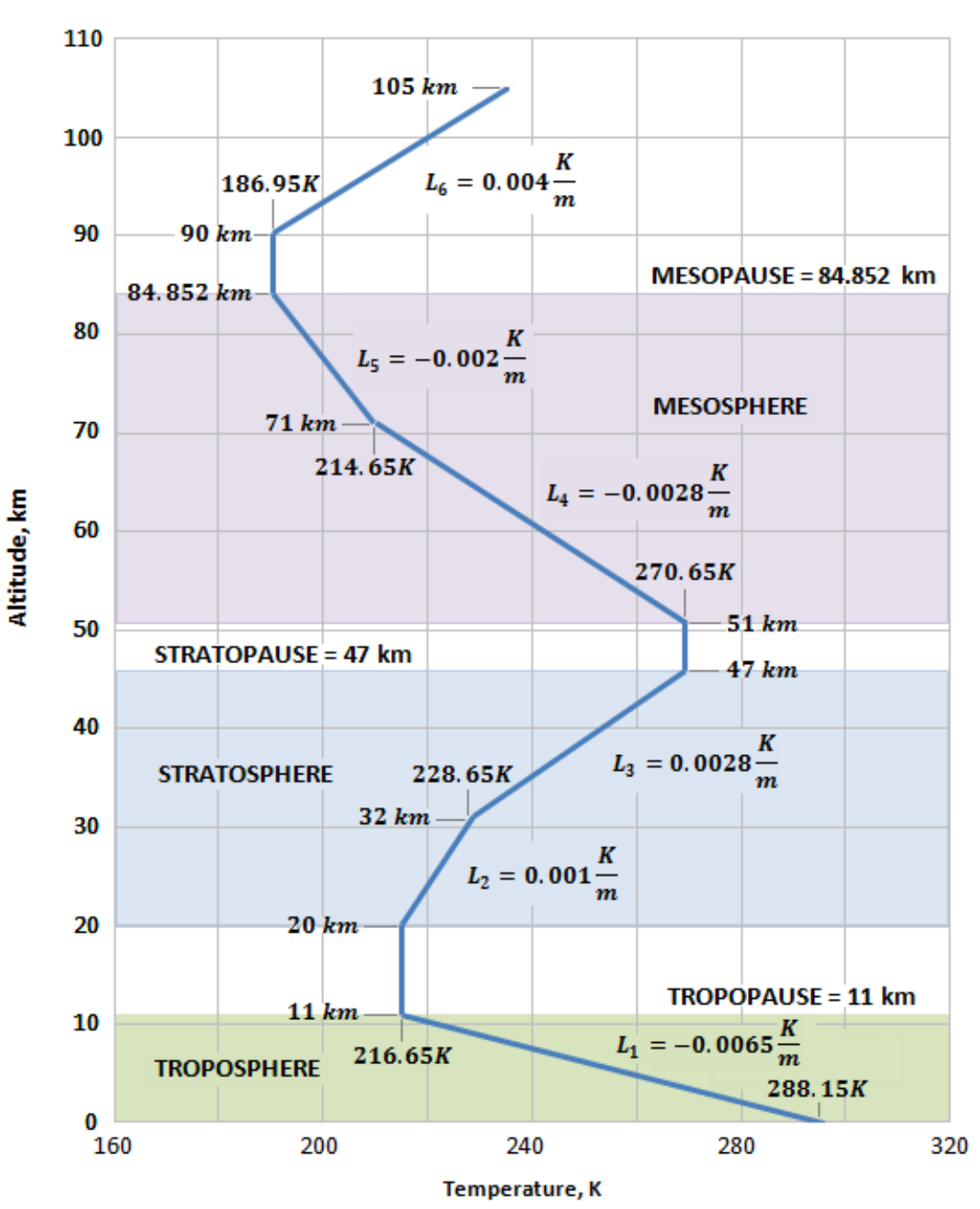 |
| Understanding the Standard Atmosphere in Aerospace Engineering |
Understanding the Standard Atmosphere in Aerospace Engineering
In aerospace engineering, the concept of the Standard Atmosphere is a fundamental reference that provides a model of how the atmospheric properties vary with altitude. This model is crucial for the design, testing, and operation of aircraft and other aerospace vehicles. Understanding the Standard Atmosphere allows engineers to predict and analyze the behavior of vehicles in different atmospheric conditions. This blog will explore the definition, components, and applications of the Standard Atmosphere in aerospace engineering.
What is the Standard Atmosphere?
The Standard Atmosphere is an idealized model that represents the average atmospheric conditions over a specific region and time. It is based on the International Standard Atmosphere (ISA), which is defined by the International Civil Aviation Organization (ICAO) and other international standards bodies. The ISA provides a set of values for temperature, pressure, density, and other atmospheric properties as a function of altitude.
The Standard Atmosphere assumes a static atmosphere where the properties vary only with altitude and not with time or geographic location. This simplification allows for a consistent reference that can be used for various engineering calculations and simulations.
Components of the Standard Atmosphere
The Standard Atmosphere is characterized by several key properties, including temperature, pressure, density, and the speed of sound. These properties change with altitude, and their variations are described by specific equations and tables.
Temperature
Temperature in the Standard Atmosphere decreases linearly with altitude in the lower layers, known as the troposphere, up to a certain point called the tropopause. Above the tropopause, the temperature remains constant or increases in specific layers.
The temperature profile is divided into layers, each with its own lapse rate (the rate of temperature change with altitude):
- Troposphere (0 to 11 km): Temperature decreases at a rate of approximately 6.5°C per kilometer.
- Tropopause (11 to 20 km): Temperature remains constant at around -56.5°C.
- Stratosphere (20 to 47 km): Temperature increases gradually due to the absorption of ultraviolet radiation by ozone.
- Mesosphere (47 to 86 km): Temperature decreases again.
- Thermosphere (above 86 km): Temperature increases with altitude.
Pressure
Atmospheric pressure decreases exponentially with altitude. At sea level, the standard atmospheric pressure is 1013.25 hPa (hectopascals).
Density
Air density also decreases with altitude, following the relationship between pressure and temperature. The density at a given altitude can be calculated using the ideal gas law.
Speed of Sound
The speed of sound in the atmosphere is a function of temperature.
Importance of the Standard Atmosphere in Aerospace Engineering
The Standard Atmosphere is essential for various aspects of aerospace engineering, including aircraft design, performance analysis, and flight testing. Here are some of the key applications:
Aircraft
Performance
Understanding the atmospheric conditions at different altitudes is crucial for predicting aircraft performance. The Standard Atmosphere provides a reference for calculating parameters such as lift, drag, thrust, and fuel consumption. Engineers use these calculations to optimize the design and operation of aircraft for different flight conditions.
Altitude and Airspeed Calibration
The Standard Atmosphere is used to calibrate altimeters and airspeed indicators. Altimeters measure the altitude based on atmospheric pressure, and accurate calibration ensures that the readings are consistent with the standard reference. Similarly, airspeed indicators rely on the relationship between dynamic pressure and airspeed, which is influenced by air density.
Flight Testing and Certification
During flight testing, aircraft performance is evaluated under various atmospheric conditions. The Standard Atmosphere provides a baseline for comparing test results and ensuring that the aircraft meets performance standards. Certification authorities use the Standard Atmosphere to establish the criteria for safe and efficient operation.
Atmospheric
Modeling and Simulation
The Standard Atmosphere is used in computational fluid dynamics (CFD) simulations and other modeling tools to analyze the behavior of aircraft and spacecraft. By incorporating the standard atmospheric conditions, engineers can simulate realistic flight scenarios and assess the impact of different design choices.
Propulsion Systems
The performance of propulsion systems, such as jet engines and rockets, is influenced by atmospheric conditions. The Standard Atmosphere provides the necessary data for calculating thrust, specific fuel consumption, and other performance metrics. This information is critical for designing engines that operate efficiently across a range of altitudes.
Limitations of the Standard Atmosphere
While the Standard Atmosphere is a valuable reference, it has certain limitations. The model represents average conditions and does not account for regional variations, weather patterns, or seasonal changes. In practice, the actual atmospheric conditions can deviate significantly from the standard values, affecting the performance and behavior of aircraft.
Weather
and Climate Variations
The Standard Atmosphere does not account for weather phenomena such as temperature inversions, storms, or turbulence. These variations can have a significant impact on flight operations and safety. Pilots and engineers must consider real-time weather data in addition to the standard reference.
Geographical
Differences
The Standard Atmosphere is based on average conditions and may not accurately represent specific geographical regions. For example, the temperature and pressure profiles over the poles differ from those over the equator. Regional atmospheric models may be used to account for these differences in certain applications.
Temporal
Changes
The Standard Atmosphere assumes static conditions, but the actual atmosphere changes over time. Factors such as diurnal cycles, seasonal variations, and long-term climate trends can affect the atmospheric properties. Engineers must consider these temporal changes in long-duration missions and space exploration.
Synopsis
The Standard Atmosphere is a foundational concept in aerospace engineering, providing a consistent reference for atmospheric properties as a function of altitude. It plays a crucial role in aircraft design, performance analysis, flight testing, and propulsion systems. While it has limitations, the Standard Atmosphere remains an essential tool for engineers and pilots.
Understanding the Standard Atmosphere enables aerospace professionals to predict and analyze the behavior of vehicles in different atmospheric conditions, ensuring safe and efficient operation. As technology advances and our understanding of the atmosphere improves, the Standard Atmosphere will continue to be a vital reference in the ever-evolving field of aerospace engineering.


0 Comments